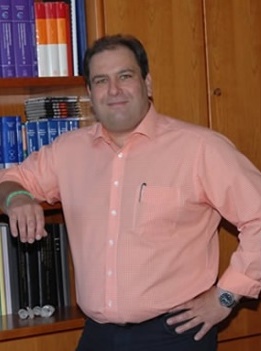报告时间:9月24日上午9:00
报告地点:催化楼三楼会议室
报告人:Karsten Meyer教授 埃尔朗根-纽伦堡大学(Friedrich-Alexander-Universität Erlangen-Nürnberg)

报告摘要:
In our efforts to activate small molecules of industrial and biological concern, we have turned our attention to reactive uranium coordination complexes. Employing the chelating triazacyclononane-, single N- and arene-anchored aryloxide ligands, (ArO)3tacn3-, (ArO)3N3-, and (ArO)3mes3- have provided access to reactive coordination compounds of uranium in oxidation states II, III, IV, V, and VI with tailorable steric and electronic profiles. These complexes display a pronounced selectivity and reactivity in reactions with CO2 and related small heteroallenes. As a result, they provide unique reaction pathways inaccessible to d-block metals. Here, we summarize our work on CO2 activation, including a previously unknown coordination mode, stoichiometric reductive cleavage, insertion reactions, and CO2 functionalization chemistry via multiple bond metathesis. We also report the stoichiometric and catalytic “disproportionation” of CO2 to CO and CO32-, yielding a µ-oxo bridged complex, followed by the insertion of another molecule CO2. In a similar strategy, we were able to isolate oxalates, thiooxalates and the mixed carbonate complexes U‒CO2E‒U, U‒CS2E‒U and U‒OC(S)Se‒U by reacting bridged chalcogenide complexes U‒E‒U (E = S, Se) with CO2, CS2 and COS. These chalcogenido and mixed-carbonate complexes represent the first of their kind. Employing the arene-anchored chelate allowed to elucidate the molecular and electronic structure of a new oxidation state in U coordination chemistry, namely U(II). In anionic [U(OArAd,Me)3mes)]⊝, the U(II) center is supported by δ backbonding. Further studies of [U(OArAd,Me)3mes)]0/- revealed unique electrochemical behavior, rendering these complexes perfect candidates for electrocatalysis. Accordingly, [U(OArAd,Me)3mes)] was found to be the first molecular uranium catalyst for catalytic H2 production. Utilization of this catalyst during H2O electrolysis lowered the overpotential by 0.5 V, increased the steady-state electrolysis current by a factor of 10 and lowered the faradaic resistance by three orders of magnitude. Isolation of key intermediates allowed to determine the reaction mechanism of H2O reduction. This reactivity was studied with a series of lanthanide complexes [Ln(OArAd,Me)3mes)] as well, which permits for fine-tuning of overpotential by choice of the lanthanide ion. Current research efforts focus on S-based ligands for uranium coordination chemistry.
报告人简介:
Karsten Meyer has published 300+ articles in peer-reviewed journals, leading to an h-index of 67 and 14,500+ citations (Scopus, 09/2024). The list of publications includes, among others, reports and articles in Science, Nature, Nature Chem., Chem, Journal of the American Chemical Society, Angewandte Chemie, and Chemical Science. He has given over 250 invited talks, including opening and plenary lectures, at conferences, research, and academic institutions worldwide.
Synthetic chemistry is at the heart of the Meyer group research program. Studies focus on synthesizing custom-tailored ligand architectures and their transition d- and f-block metal coordination complexes. Special attention is drawn to molecularly engineered, ordered structures that provide well-defined confined spaces for highly selective molecular and catalytic transformations. While transition metals are traditionally an essential source of inspiration for our research, the Meyer group has developed distinguished expertise in uranium coordination chemistry. Transition-metal-based catalysts in pre-organized materials, such as custom-tailored, including chiral ionic liquids (ILs) and ionic liquid crystals (ILCs), play an important role in our research. Recently, the development of platforms to facilitate charge and light-driven catalytic processes relevant to sustainable energy cycles has been explored.
State-of-the-art spectroscopic investigations of the molecular and electronic structures of the reactive metalsubstrate complexes, as well as computational methods, aid the elucidation of coordination modes, underlying electronic structures, and reactivities. Combining synthesis, spectroscopy, electrochemistry, and computation facilitates a deep understanding of molecular reactivity and better knowledge of structure-function relationships. The ultimate long-term objectives of the fundamental research are the development of efficient catalysts for the metal complex-assisted conversion of abundant natural substrate resources and the discovery of renewable energy sources.






